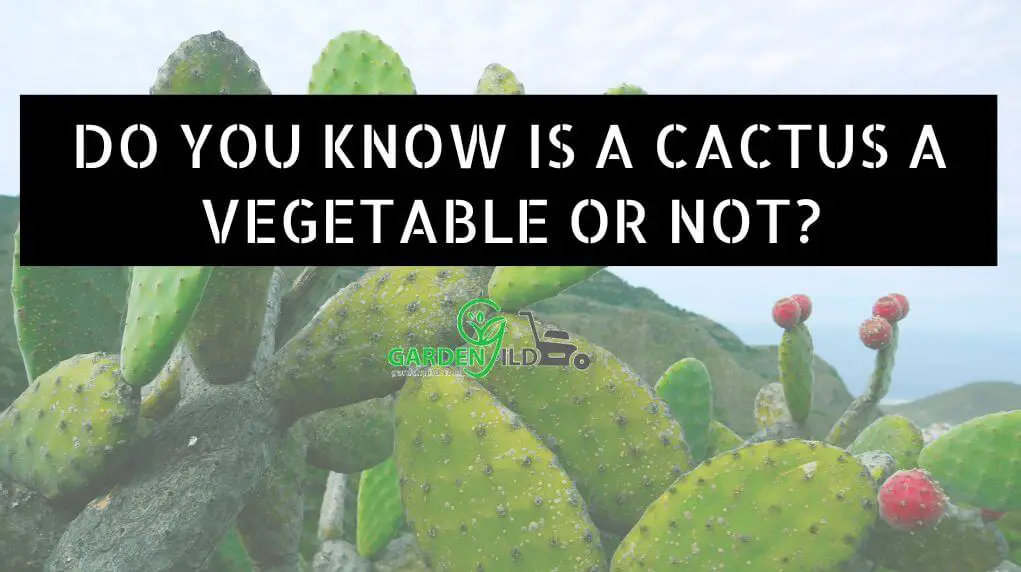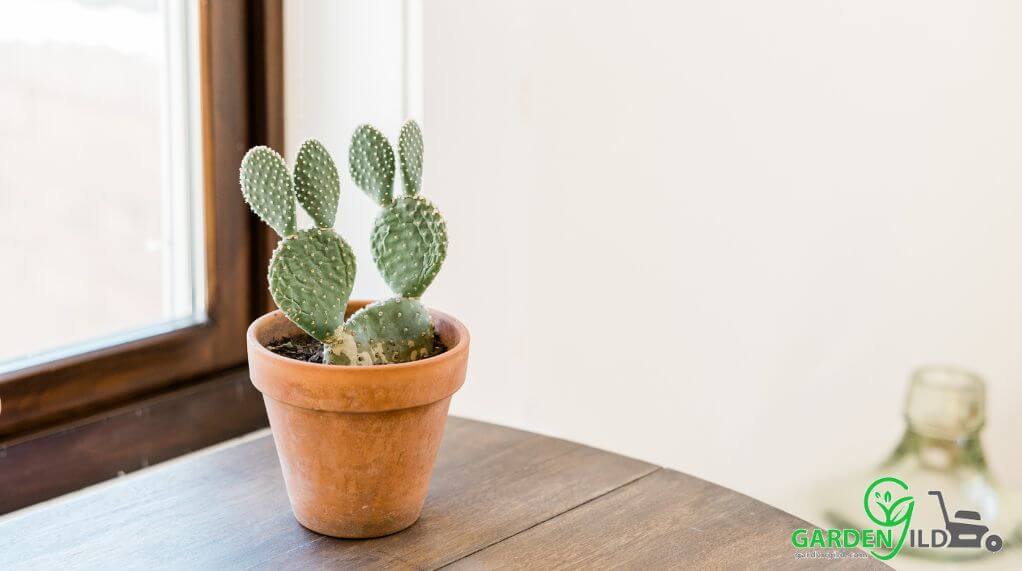Yes, the cactus is considered a fruit and also a vegetable. The edible parts of cactus-like pads or cacti (the fruit of cactus) are famous and could be fun to try at least once in a lifetime.
Many people have this question: what is a cactus, and how is it edible?
Cactus is a member of the Cactaceae family, which has more than 1700 species scattered around the world. You will find a cactus in different shades of green and always covered in spikes and with no leaves.
Since cactus is safe to eat after removing the spikes from its body, it makes cactus a unique vegetable in the world of vegetables. If you are hungry to know more about the cactus, read this article to get all your questions answered.
In this garden gild guide we’ll discuss the following:
- Is a cactus a vegetable?
- Is a cactus pear a vegetable?
- Is cactus good for you?
- Is a cactus a tree?

here is the brief answer to Is a cactus a vegetable?
The answer might confuse you, but cactus is considered a vegetable. I know; even I was shocked to hear this.
Cactus is a plant that is native to deserts. Unlike many other trees, the cactus has no shade of its own. This is because the cactus bears no leaves. The cactus could be the only tree that has no leaves on it. Instead of leaves, the cactus is covered with spikes and thorns.
Even though the cactus has some qualities of not calling itself a vegetable, it seems like people do like the texture of a cactus. The skin cactus can be eaten with all the spikes removed from the cactus.
Cactus is also known as a flowering plant, and a specific type of fruit is grown on the catus body. The fruit can be harvested once the plant develops. But it is hard to grow fruits on a cactus tree since proper care is needed for it to blossom, and every fruit is not edible.
Some edible cactus fruit is:
| Species of cactus | Characteristics |
| Organ pipe cactus | The fruit of this plant is sweet and known as a succulent fruit. |
| Saguaro cactus | The fruit is slightly sweet and has no solid flavour for it yet tasty. It can remind you of eating a pearl fruit. |
| Prickly pear cactus | In its raw and unripened form, it has the taste of tropical fruit. When the fruit is ripe, it is more on the sweet side. |
| Peruvian apple cactus | It has a sugary taste and does have a crunchy texture to it. |
| Dragon fruit cactus | Dragon fruit is a tropical fruit which has similarities with watermelon. It contains high fibre, which makes it a great addition to your diet. |
Know that all cactus plants are not safe to eat. There are certain edible species of cactus. Below are some non-edible cactus plants which you must avoid for your safety.
#1- San Pedro cactus
It is a native plant to the Andes Mountains. By consuming this cactus, you are more prone to nausea, puking, hallucination and agitation. This is mainly because of a psychedelic alkaloid property, which is dangerous for human health.
#2- Bolivian torch cactus
Bolivian torch cactus is another cactus species, scientifically known as Echinopsis lageniform. It is also a non-edible plant due to its high level of toxicity and side effects.
The plant is known to contain high amounts of mescaline. Mescaline can trigger health problems like auditory and visual hallucinations.
#3- Peyote cactus
Like other cactuses, it is also a toxic cactus species that are not edible. This cactus is scientifically known as Lophophora williamsii and contains a psychedelic alkaloid known as mescaline.
Is a cactus pear a vegetable?
Not just the prickly pear cactus but all cactus species are considered a vegetable, but some species are non-edible due to their high level of toxicity and health risks.
Yes, cactus pear is indeed considered a vegetable, and it is edible. The green pads of a cactus pear are called Napolito, and the fruits are called pear or tuna. The green pads are edible, while the fruits can be available only in the summer.
Is cactus good for you?
Cactuses are well known for their benefits and nutrients. Cactus pads and cactus fruits can prevent infections and high cholesterol. And it is not like those traditional medicines which taste bad and leave an awful taste afterwards.
You can eat the pads and the fruit raw if you want or prepare dishes out of it. Try out some cactus juice if you want to add variations to your diet. Below are some major health benefits of cactus:
#1- Controlling cholesterol
To lower the cholesterol level, it is important to take a high amount of fibre, and luckily the cactus has already solved this problem. Cactus pads and cactus fruits are rich in fibre, thus lowering the cholesterol level in the blood.
Research carried out on cactus has proved that cactus can reduce fat, blood pressure and cholesterol. Adding cactus to your diet could reduce the chances of heart diseases like strokes and vascular diseases.
#2- Blood sugar
The blood sugar level is a major cause of illnesses like diabetes, heart disease and strokes. A survey carried out by the researchers shows that people who had included cactus pads in their diet had lower blood sugar levels. This makes cactus the best vegetable for patients with diabetes since cactus is cost-efficient.
#3- Boost immune system
We all know how important the immune system is for our body, and the cactus has got it covered. Vitamin C is one of the best immune boosters, and cactus is an excellent source of vitamin C.
It is found that regular intake of vitamin C can increase the production of white blood cells, which can help fight diseases.
Is a cactus a tree?

Cactus is not a tree. We consider cactus as a vegetable and fruit. The main difference between a tree and a cactus is that a cactus has no leaves. Instead, it has spikes and thorns on its body.
Unlike any tree, the cactus can survive in a harsh environment and the worst conditions possible. The cactus can be eaten raw, cooked or grilled.
Conclusion
Cactus is indeed a great vegetable to add to your diet. It has so many health benefits like aiding in weight loss and reducing the chances of heart disease makes it a must-have vegetable.
Not only that, but cactuses are also rich in other nutrients like Vitamin A, Vitamin C, Potassium, Copper, Iron and Omega 3.
More importantly, the cactus is cheap and available almost anywhere. So next time, don’t forget to add some cactus to your diet.
Relevant post:
